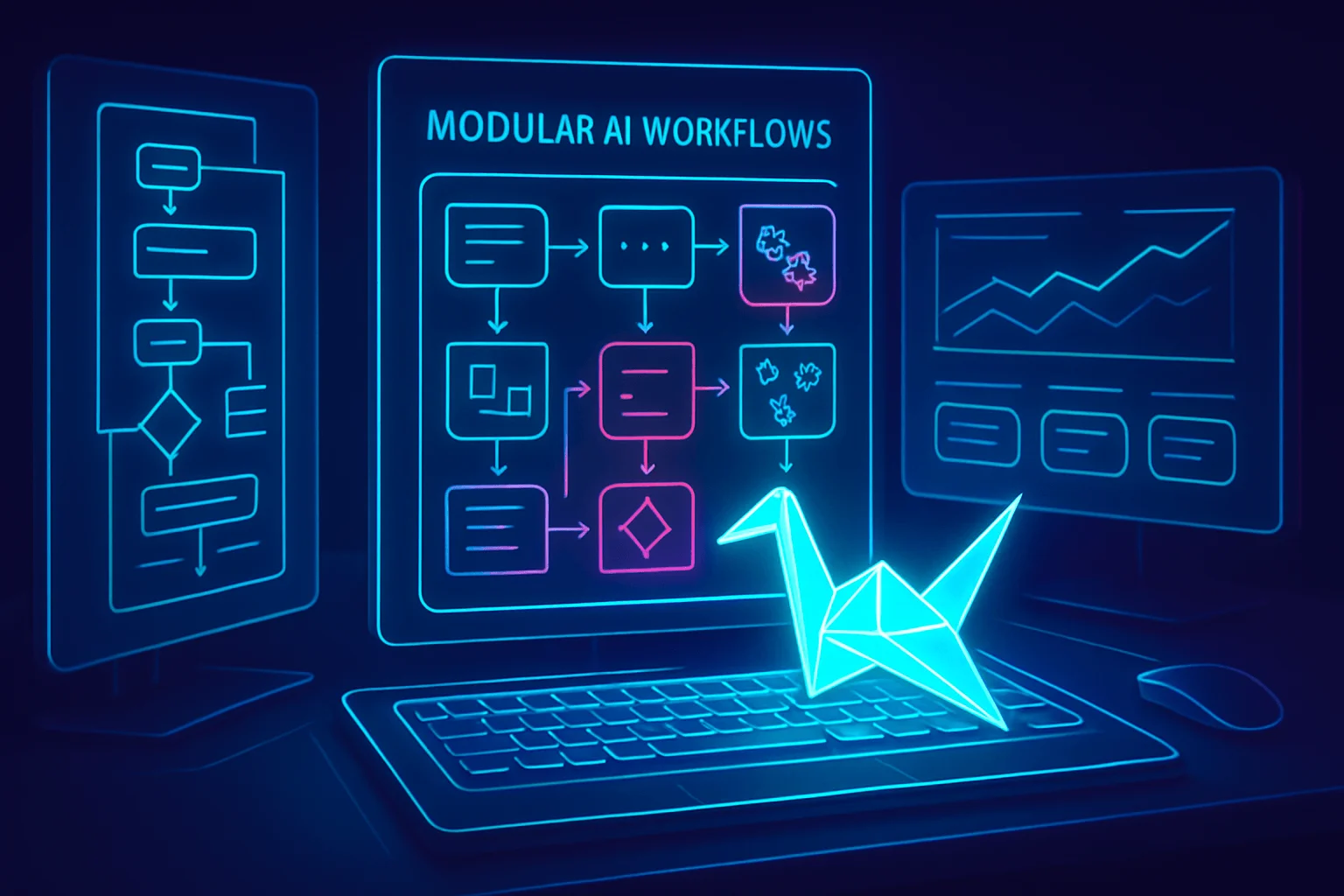AI Task Automation Boosts Team Efficiency and Drives Business Growth

Imagine a high-performing team faced with a flood of incoming tasks—urgent client requests, internal approvals, project milestones—all competing for attention. Traditionally, figuring out who should handle what, and when, can bog down even the most talented organizations, leading to missed opportunities and employee burnout. In today’s fast-paced business world, efficiency isn’t just a competitive edge—it’s mission critical. That’s where intelligent task routing powered by AI steps in, revolutionizing collaboration by ensuring the right work reaches the right people at precisely the right time. This article explores how AI-driven automation is streamlining workflows, improving communication, and freeing up time for deep, value-added work. You’ll discover the core benefits of leveraging smart task allocation, learn practical strategies for implementation, and see real-world impacts on both day-to-day operations and long-term growth. Whether you manage a lean startup or a sprawling enterprise, understanding this AI-powered shift could transform the way your team works—and the results you achieve.
Smart Lead Assignment and Follow-Up
AI-driven task automation transforms how sales and customer success teams handle incoming leads by automatically evaluating, routing, and prioritizing inquiries. Intelligent task routing algorithms quickly analyze key factors—such as lead source, industry, urgency, historical data, and team member workload—to assign leads to the most suitable representatives in real time. This ensures that high-value prospects are never left waiting and that follow-ups are timely and targeted.
Workflow Steps:
- Ingest and categorize leads from multiple channels (website, email, phone).
- Automatically score leads based on predefined criteria and historical conversion data.
- Match leads to available sales reps using intelligent workload balancing.
- Trigger instant personalized notifications and reminders for assigned reps.
- Monitor outcomes and feed performance data back into the AI model for continual improvement.
Best Practice:
Regularly audit your lead scoring model and routing rules to ensure they evolve with shifting market demands and changes in your team’s composition.
Scenario:
A fintech company faces surging website traffic after a viral media mention. Their AI task automation reads the influx of leads, spots several C-level prospects from enterprise firms, and routes those to the top-performing B2B sales team while assigning startup inquiries to junior reps. Response time drops from hours to minutes, resulting in triple the demo bookings compared to the previous manual system.
Automated Customer Support Ticket Triage
Efficient customer support hinges on quick, accurate responses. AI task automation platforms streamline triage by analyzing incoming tickets through natural language processing, categorizing issues, and assigning them to specialists or support queues based on urgency, sentiment, item type, and staff expertise. This not only accelerates resolution times but also boosts morale by preventing burnout on frontline agents.
Workflow Steps:
- Intake support tickets via chat, email, social media, and web forms.
- Use AI to classify the issue type and predict ticket complexity.
- Analyze sentiment to flag frustrated or high-priority customers.
- Assign tickets to relevant agents or escalate according to predefined SLAs.
- Enable dynamic reassignment if tickets remain unresolved beyond set thresholds.
- Generate real-time dashboards showing ticket status and team performance.
Best Practice:
Integrate feedback loops—soliciting both agent and customer input—to refine triage rules and escalate pathways, ensuring continuous improvement and fairness in ticket distribution.
Scenario:
A SaaS provider gets a spike in support tickets after a major update. The AI system instantly filters complaints about a new feature, detects negative sentiment keywords, and pushes those tickets to the senior product support team with an auto-generated summary. Urgent but simple password reset requests go to chatbots, reducing average first response time by 65% and raising customer satisfaction scores during high-stress periods.
Intelligent Project Task Delegation
Project management can be challenging when teams juggle multiple deadlines and distributed responsibilities. AI-powered task delegation engines analyze deadlines, task complexities, team member availability, skill sets, and previous performance to allocate tasks efficiently. This dynamic assignment avoids bottlenecks, evenly distributes work, and anticipates resource constraints.
Workflow Steps:
- Break down projects into discrete, trackable tasks in your project management platform.
- Assess each task’s dependencies, skill requirements, and urgency levels.
- Evaluate current workload and vacation schedules for the entire team.
- Match tasks to team members based on fit, load, and availability.
- Set up automated reminders and status checks to keep progress on track.
- Predict potential overruns and redistribute tasks proactively.
Best Practice:
Schedule regular retrospective reviews to tune your AI’s assignment logic, incorporating team feedback about workload balance, satisfaction, and bottlenecks.
Scenario:
A marketing agency coordinates a multi-channel product launch. The AI system recognizes a designer is on leave, re-routes design tasks to another available staff member without manual intervention, and assigns on-deck copywriting tasks to the next best-suited writer, factoring in writing style and prior campaign success rates. All deadlines are met with zero overtime, and the team reports a higher sense of fairness and visibility.
Proactive Workflow Escalation and Risk Management
Not all tasks follow a linear path—unexpected blockers, compliance risks, or urgent stakeholder requests can stall progress. AI-enabled escalation workflows proactively monitor for stalled tasks, potential violations, or delays, and automatically trigger escalation actions. By predicting risks and preemptively routing issues, businesses avoid costly errors, regulatory penalties, and dissatisfied clients.
Workflow Steps:
- Continuously scan task status, due dates, and completion logs across the organization.
- Detect anomalies, such as repeated delays, dependencies in jeopardy, or tasks nearing non-compliance.
- Calculate risk scores to determine escalation urgency and route to appropriate leaders or specialized teams.
- Auto-notify stakeholders and suggest remediation options based on similar past incidents.
- Record escalation resolutions for future AI learning and compliance audits.
Best Practice:
Establish clear escalation criteria and maintain transparent communication protocols, so automated escalations are trusted, rapid, and accompanied by well-documented context.
Scenario:
A healthcare tech firm with strict HIPAA compliance requirements uses AI to monitor all project workflows. The system detects documentation approaching regulatory deadlines and auto-escalates at-risk records to compliance officers with a full activity trail. After a few near-misses are successfully averted, the firm sees a drop in compliance incidents, saving thousands in potential fines and reputation damage.
Common Challenges
Even with advanced AI solutions, task automation workflows can encounter significant pitfalls. Addressing them is essential to realize the full performance gains from intelligent routing.
-
Data Silos and Integration Gaps:
AI’s effectiveness depends on centralized, accurate data streams from all relevant systems (CRM, support, HR, project management). Siloed data sources handicap automation, leading to poor task assignment or missed escalations. Routine system audits and robust integration tools are essential to overcome this barrier. -
Over-Automation and Loss of Human Touch:
Excessive automation can leave customers or team members feeling neglected or misunderstood, especially in nuanced, relationship-driven interactions. Balance automation with clear “human-in-the-loop” checkpoints, and regularly seek feedback on experiences. -
Change Resistance and Adoption Issues:
Teams may resist automation out of fear of job loss or workflow disruption. Early involvement, robust training, and transparent communication about how AI augments (not replaces) their work encourage buy-in and engagement.
Overcoming Challenges:
“Successful automation projects focus as much on organizational culture and process adaptation as on technology. Prioritize cross-functional collaboration, continuous improvement, and regular pulse checks to ensure your AI-driven workflows deliver sustainable benefits.”
FAQs
Q1: How do we ensure our AI assignments remain fair and unbiased over time?
A1: Regularly retrain your AI models with the latest performance and satisfaction data—both quantitative (resolution times, customer ratings) and qualitative (team feedback). Schedule quarterly bias and equity audits: look for patterns like certain groups consistently getting harder tasks or longer wait times. Use these insights to adjust your routing criteria and keep transparency by communicating changes and audit findings to stakeholders.
Q2: What’s the best approach to start with AI task automation without overwhelming the team?
A2: Start with one high-impact, low-complexity workflow—such as support ticket routing or basic lead assignment. Involve end users early for insight into pain points and concerns. Run a pilot program for that workflow, tracking key performance and sentiment metrics. Gradually scale up, incorporating feedback and lessons learned, before automating additional processes. Provide hands-on training and establish superuser advocates within each team.
Q3: How can we measure the ROI of AI-powered workflow automation?
A3: Identify clear before-and-after KPIs: average response times, lead conversion rates, support SLAs, project completion times, and employee satisfaction scores. Quantify cost savings from reduced manual intervention, overtime, and error rates. Attribute revenue gains to faster sales cycles and improved customer retention. For ongoing clarity, build custom dashboards that visualize these metrics in real time and review them monthly with all stakeholders to inform further investment decisions.
Future Trends in AI Task Automation
As AI technology matures, the landscape of task automation will rapidly evolve, ushering in new capabilities and innovation opportunities for modern organizations. Staying ahead means anticipating where the field is heading and preparing to leverage next-generation features as they emerge.
Emerging Trends to Watch:
-
Hyper-Personalization:
AI systems will move beyond generic rules, using granular behavioral data and deep learning to tailor task assignments and communication. Expect automation that adapts dynamically to individual employee preferences, strengths, and even real-time emotional states—further boosting engagement and productivity. -
Conversational AI for Orchestration:
The next wave of tools will use natural language interfaces, allowing staff to distribute, escalate, or reassign tasks through chatbots or virtual assistants. This eliminates the need for complex dashboards, making automation more accessible for non-technical users. -
Cross-Platform Workflow Automation:
Seamless, AI-driven task management will span multiple tools—from CRM and service desks to collaboration suites—breaking down silos and creating a unified, end-to-end workflow. Integrations via APIs and advanced middleware will become table stakes, enabling automation triggers across any organizational system. -
Autonomous Process Optimization:
Advanced AI models will proactively analyze workflow data, predict bottlenecks before they arise, and autonomously suggest (or even implement) process improvements. This “self-tuning” capability minimizes manual intervention and perpetuates performance gains. -
Ethics and Transparency by Design:
Regulatory scrutiny and rising expectations around trust will push vendors to deliver more explainable AI. Automated audit trails, accessible bias-reporting, and robust privacy controls will be built in from the ground up—helping organizations comply with evolving standards and maintain stakeholder trust.
Pro Tip:
Start to experiment with these emerging features now—through pilot programs, vendor partnerships, or innovation sprints—so you’re ready to scale as they become mainstream.
Getting Started: Action Checklist
To maximize the impact of AI task automation in your organization, follow this actionable checklist to ensure a smooth rollout and sustainable adoption:
-
Map Your Existing Processes:
Document all key workflows, stakeholders, pain points, and dependencies. Identify bottlenecks best suited for automation. -
Define Clear Objectives and KPIs:
Set measurable, outcome-oriented goals (e.g., “cut ticket response time by 40%” or “reduce project overruns by half”). -
Evaluate Tools and Integration Needs:
Assess available AI automation platforms for fit with your current tech stack and data landscape. Prioritize those with strong integration, security, and explainability features. -
Pilot with a Focused Use Case:
Select a specific workflow for your initial automation pilot, involving end users from the outset. Set baseline metrics for comparison. -
Train and Empower Your Teams:
Offer hands-on, scenario-based training—and recognize “automation champions” to drive internal adoption. -
Monitor, Measure, and Iterate:
Track progress against your KPIs, collect both quantitative and qualitative feedback, and fine-tune workflows as your needs evolve. -
Scale and Institutionalize:
Once your pilot is proven, expand to additional workflows and embed automation into your standard operating procedures.
Conclusion
AI-driven task automation is no longer a distant promise—it’s a practical, transformative solution for organizations aiming to boost agility, accuracy, and employee satisfaction. By strategically embedding AI into lead management, support triage, project assignment, and risk management, you unlock efficiencies that compound over time. Success depends on balancing technological innovation with thoughtful change management, robust data integration, and a relentless focus on fair, human-centric outcomes. With smart planning and continuous improvement, AI task automation can become your catalyst for sustained operational excellence—and a springboard to future-ready, resilient growth.
Harnessing intelligent AI for task routing isn’t just a trend—it’s a transformative way to empower teams, streamline collaboration, and unlock business growth. Today’s organizations need actionable tools that ensure the right work reaches the right people at the right moment, eliminating bottlenecks and inspiring innovation. By embracing the strategies we explored, you’ll position your team for agility and success in an ever-evolving landscape. Ready to elevate your workflow? Reflect on your current processes, try out the AI solutions discussed, and share your experiences in the comments below. Let’s shape the future of teamwork, together!



